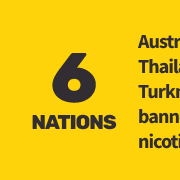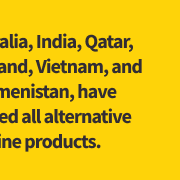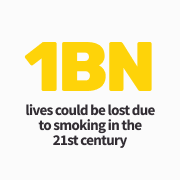2024Effective anti-smoking
policies global index
The Best Performing Countries in our Overall Assessment.
| Country | Rank | Global Index | Vaping | THP | Snus | NP |
|---|
The Countries Struggling the Most in Our Overall Ranking.
| Country | Rank | Global Index | Vaping | THP | Snus | NP |
|---|














FINDINGS
From the UK's Vaping to Australia's Ban: Diverse Global Strategies in Smoking Control
The United Kingdom, especially England, and Sweden, stand out with their progressive strategies, particularly in vaping and snus, respectively, highlighting their success in harm reduction. The Czech Republic, Slovakia, Greece, and Germany also show a preference for vaping and THP, indicating a balanced approach to reducing smoking harms. In stark contrast, Australia, Argentina, Japan, Turkey, China, India, and Brazil exhibit stricter policies, with Australia implementing a comprehensive ban. Learning from these countries' journeys in anti-smoking policies provides a clear picture of dos and don'ts, guiding decision-makers worldwide in crafting more effective strategies.

METHODOLOGY
Behind the Scores: Understanding How 11 Categories Shape the Global Index
The methodology employed in this index inevitably involves subjective elements due to the challenge of standardizing real-world data into a comparative, easily readable indicator for various scenarios. To maintain practicality, the scores for each evaluated category have been standardized, incorporating a degree of subjectivity in the weight each category holds in the final score. In total, the methodology evaluates 11 categories, with two - Prohibition and Regulatory Framework - considered the most crucial as they form the foundation for the rest. The other categories are essential for facilitating the transition from combustible tobacco to Non-Combusted Nicotine Products (NCNPs).
LEGAL
The "Legal" category assesses whether regulations allow or prohibit the commercial sale of NCNPs. It also evaluates nicotine content limits for vaping products and nicotine pouches if their sale is permitted. This is significant as some countries allow these products but with considerable nicotine restrictions, rendering them ineffective for quitting combustible products.
FRAMEWORK
The “Framework” category evaluates whether specific regulations for NCNPs exist. A framework is recognized if authorities have altered or introduced laws to regulate or ban these products, even by redefining existing combustible product laws. Conversely, a framework is absent when restrictions are implied from existing combustible product legislation, or market freedoms arise from a lack of specific laws.
SWITCHING
“Switching” assesses whether authorities proactively promote the use of NCNPs or acknowledge their lower relative risk compared to combustible products, even without actively encouraging their use. This category is crucial as it distinguishes between normative policy within the legal and regulatory framework and general health policies implemented by governments, often serving an informative and scientific reference role by health authorities.
PUBLIC POLICY RECOMMENDATIONS
Abandonment of the General Bans on Display, Advertising, Packaging, and Use of NCNPs
A sensible, evidence-based regulatory framework is needed to treat NCNPs as public health tools, ensuring quality and preventing underage use.
Caution on Nicotine Content Limitations
Mistakenly, four out of ten smokers and ex-smokers think that nicotine causes most smoking-related cancers when the evidence shows that nicotine carries minimal risk.
Promotion of NCNPs as an Active Public Policy for Smoking Cessation
The "Quit or Die" policy is both inhumane and unscientific; promoting awareness of NCNPs as safer alternatives for smokers who struggle to quit can lead to significant health benefits.
A DEMOGRAPHIC OVERVIEW
0M
live in the Top 20
countries.
0.0 BN
live in countries with room
for improvement in
anti-smoking policies.
0 %
of the global
population is covered
by the Index





























